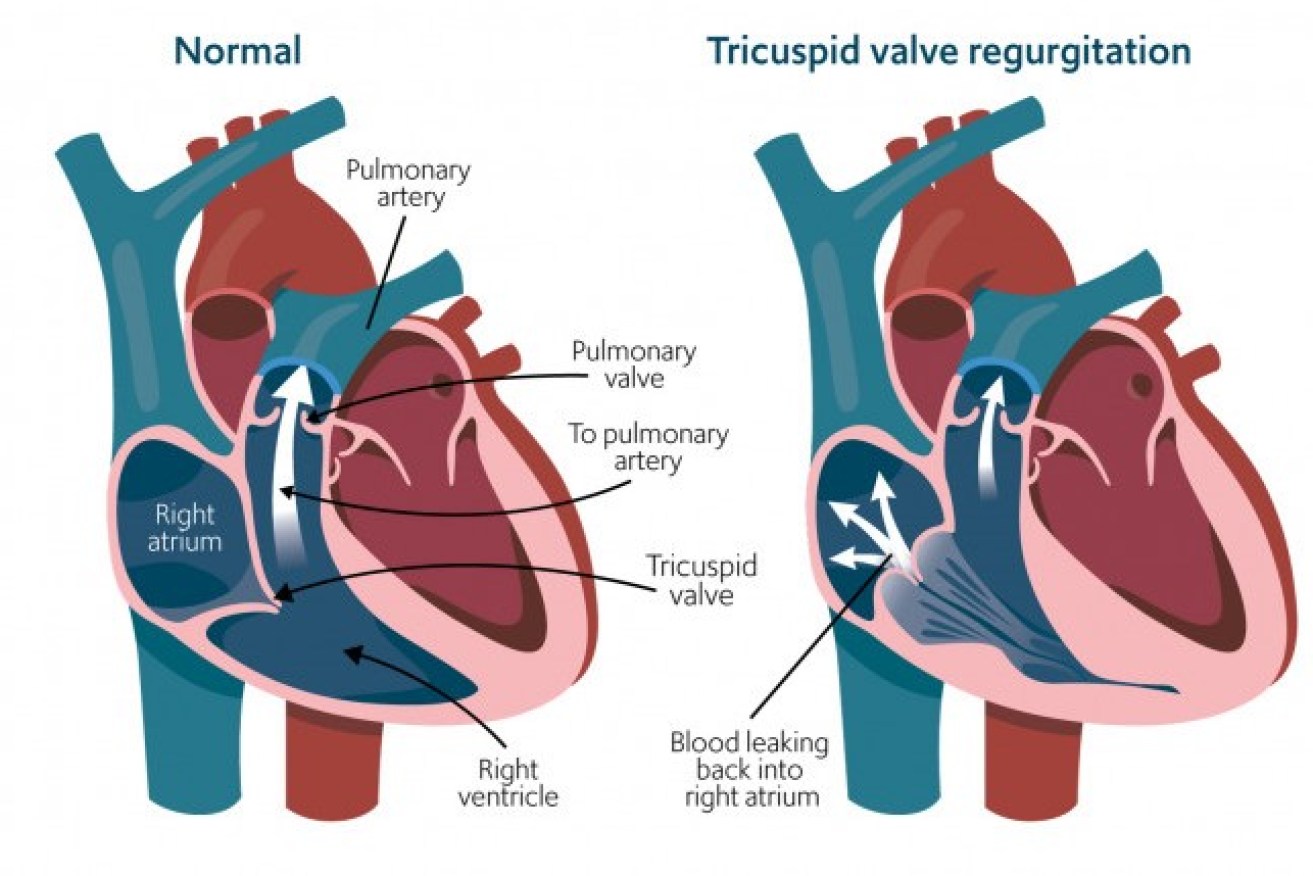Forgotten heart valve: New treatment for nasty killer


A leaky tricuspid valve causes fluid to accumulate in vital organs. The eventual outcome is kidney and heart failure.
In 2021, Laurence Beesley had open-heart surgery that involved everything but the kitchen sink.
A benign tumour on his heart, called a myxoma, was removed. His dodgy aortic valve was replaced. And a double-bypass was engineered.
It all seemed to go well.
Soon enough, Mr Beesley, 75, was walking up to five kilometres without a great effort.
The next day, while heading home from lunch, his energy evaporated and he had great difficulty walking.
The problem was a leaking tricuspid, officially known as tricuspid valve regurgitation.
Never heard of it?
The tricuspid valve controls the flow of blood from your heart’s top right chamber (atrium) to the right bottom chamber (ventricle).
When blood leaks backward into the atrium from the leaky tricuspid valve, your heart has to pump harder to move blood through the valve and around the circuit.
This leak causes fluid to accumulate in vital organs, including the gut (where you might feel you’ve turned into a water bomb) and the kidneys.
It’s a miserable situation that can slowly kill you.
And if the tricuspid valve is sometimes called “the forgotten valve”, it’s because there have been no good treatments when it leaks.
How do you fix it?
Associate Professor Tony Walton is an interventional cardiologist based at The Alfred in Melbourne.
Dr Walton told Mr Beesley there were three options.
First, there was open-heart surgery, again. In Mr Beesley’s case, this was impossible. More than 50 years ago he’d been ill with Hodgkins disease and treated with full body radiation.
His 2021 open-heart surgery had essentially used up his quota. Besides, said D Walton, open-heart wasn’t a great option anyway.
“The surgery is relatively high risk and doesn’t always work,” he said. “The types of patients tend to be older and more at risk.”
Dr Walton said he’d sent hundreds of patients for surgery over the last 10 years for different conditions. Maybe five of those were an attempt to repair a tricuspid valve. “It’s just not commonly done because of the risks.”
The second option was to prescribe Mr Beesley diuretics, in a bid to limit the fluid retention (and indeed, he suffered with swollen ankles) but otherwise he’d have to “live with it”.
The third option was an experimental surgery that had been tried in Australia “a handful of times”.
Mr Beesley would be the first person in Victoria to give it a try.
The new surgery
For about 10 years or so, a leaking mitral valve (which controls the flow of blood from the atrium to the ventricle on the left side of the heart) has been increasingly treated with a minimally invasive procedure.

Laurence Beesley, one of 120,000 Australians with tricuspid valve regurgitation.
This involves a catheter being inserted in the leg or chest and guided to the heart. The valve is replaced or repaired via this access. A balloon is expanded to press the valve into place.
Finally, a similar procedure for the repair of the tricuspid valve has been trialled with success in the US and Europe, and slowly taken up in Australia.
To repair a tricuspid valve, the patient undergoes general anaesthetic, and a catheter is passed through the femoral vein in the groin and progressed to the right side of the heart.
In Mr Beesley’s case, the loose flaps of the valve were clipped with a device that enabled the valve to open and shut appropriately.
For more on the development and trialling of these devices see here.
Mr Beeseley hits the treadmill
The surgery took place about eight months ago. Since then, Laurence Beesley is happy to report his quality of life has markedly improved.
Prior to all this, I couldn’t run. I hadn’t run for years. Now I can get on the treadmill at the gym and push my heart rate up to 80 per cent maximum.
He is also happy to report the fluid retention has eased. “I have slim ankles again,” he says.
Meanwhile, Dr Walton has a tricuspid patient who refuses to be sent home from hospital until she’s treated one way or the other.
“We’re assessing whether or not the new procedure is appropriate,” he said.








